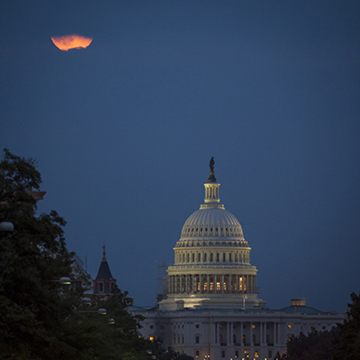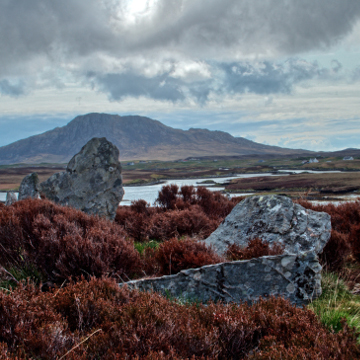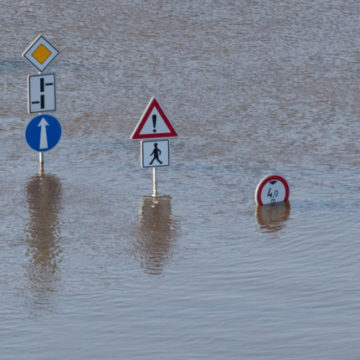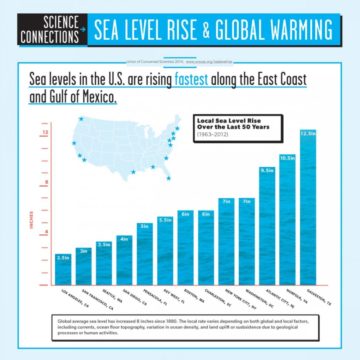National Landmarks at Risk Because of Climate Change

The Environmental and Energy Study Institute (EESI) and the Union of Concerned Scientists (UCS) held a briefing highlighting the risks climate change poses to landmark historic sites around the United States. This briefing unveiled a new report from UCS which highlights climate threats to the nation’s iconic landmarks and historic sites, and details steps being taken to protect these national treasures. The report includes 30 at-risk sites, including places where the “first Americans” lived, the Spaniards ruled, English colonists landed, slavery rose and fell, and gold prospectors struck it rich. Some of the sites also commemorate more modern “firsts,” such as the race to put the first man on the moon.
For the first time in its history, the Society for American Archaeology is calling attention to the damage climate change is causing endangered archaeological sites. Sea level rise, coastal erosion, increased flooding, heavy rains and larger wildfires are damaging archaeological sites, historic buildings, and cultural landscapes across the nation. Cultural resource managers already are integrating resiliency and adaptation measures into their planning process, to protect these sites from climate change impacts. From Mesa Verde to the Statue of Liberty and even modern NASA launch sites, these sites tell the compelling story of human occupation and history in the United States, a history that is increasingly threatened by climate change. A recent National Park Service analysis shows that 96 percent of its land is in areas of observed global warming over the past century. Each year, millions of visitors frequent NPS and other historic sites, creating a large impact on local economies. For example, Hurricane Sandy alone caused an estimated $77 million in damages to the Statue of Liberty and Ellis Island. The Statue of Liberty was closed to visitors for eight months, and the storm cost a local ferry operator 80 percent of its revenue, forcing the operator to lay off 75 percent of its workforce.
Speakers:
Silent pre-roll to 0.30
Intro: Starts at 0.31
Martin Heinrich, Senator (D-NM), skip to: 2.10
Discusses the threats that increasingly intense and frequent forest fires represent to the natural, cultural, and historical resources of New Mexico. Senator Heinrich notes that changes in weather, precipitation and wind patterns over the last 20 years in New Mexico risk wiping the states numerous archeological sites off the map.
Adam Markham, Director of Climate Impacts, Union of Concerned Scientists, skip to: 8.35
Describes the results of National Landmarks at Risk report by the Union of Concerned Scientists.
Dr. Jeffrey Altschul, President of the Society for American Archaeology, skip to: 16.22
Focuses on the importance of not only protecting archaeological sites from climate change, but also of using these sites as a model for what works and what doesn’t when it comes to human adaption to a changing climate.
Dr. Anastasia Steffen, Archaeologist, Valles Caldera National Preserve, NM, skip to: 22.53
Discusses the effects that increasingly frequent and serious forest fires have had on the Southwest, and in particular on two parks, Mesa Verde National Park and Bandelier National Park.
Dr. Jeffrey Altschul, President of the Society for American Archaeology, skip to: 16.22
Focuses on the importance of not only protecting archaeological sites from climate change, but also of using these sites as a model for what works and what doesn’t when it comes to human adaption to a changing climate.
Dr. Anastasia Steffen, Archaeologist, Valles Caldera National Preserve, NM, skip to: 22.53
Discusses the effects that increasingly frequent and serious forest fires have had on the Southwest, and in particular on two parks, Mesa Verde National Park and Bandelier National Park.
Walter Dasheno, former Governor of the Santa Clara Pueblo, Rio Arriba County, NM, skip to: 31.49
Talks about the devastating effects that forest fires have had on the Santa Clara Pueblo tribe, which is located in the Bandelier region.
Lisa Craig, Chief of Historic Preservation, Annapolis, MD, skip to: 41.47
Speaks of what the town of Annapolis, which is directly threatened by rising sea levels, is doing to mitigate and adapt to rising sea levels.
Alan Spears, Historian and Director of Cultural Resources, National Parks Conservation Association, skip to: 50.49
Discusses the importance of National Parks as a voice for the nation and its history, particularly within the African American community.
Question and answer session, skip to: 55.45




